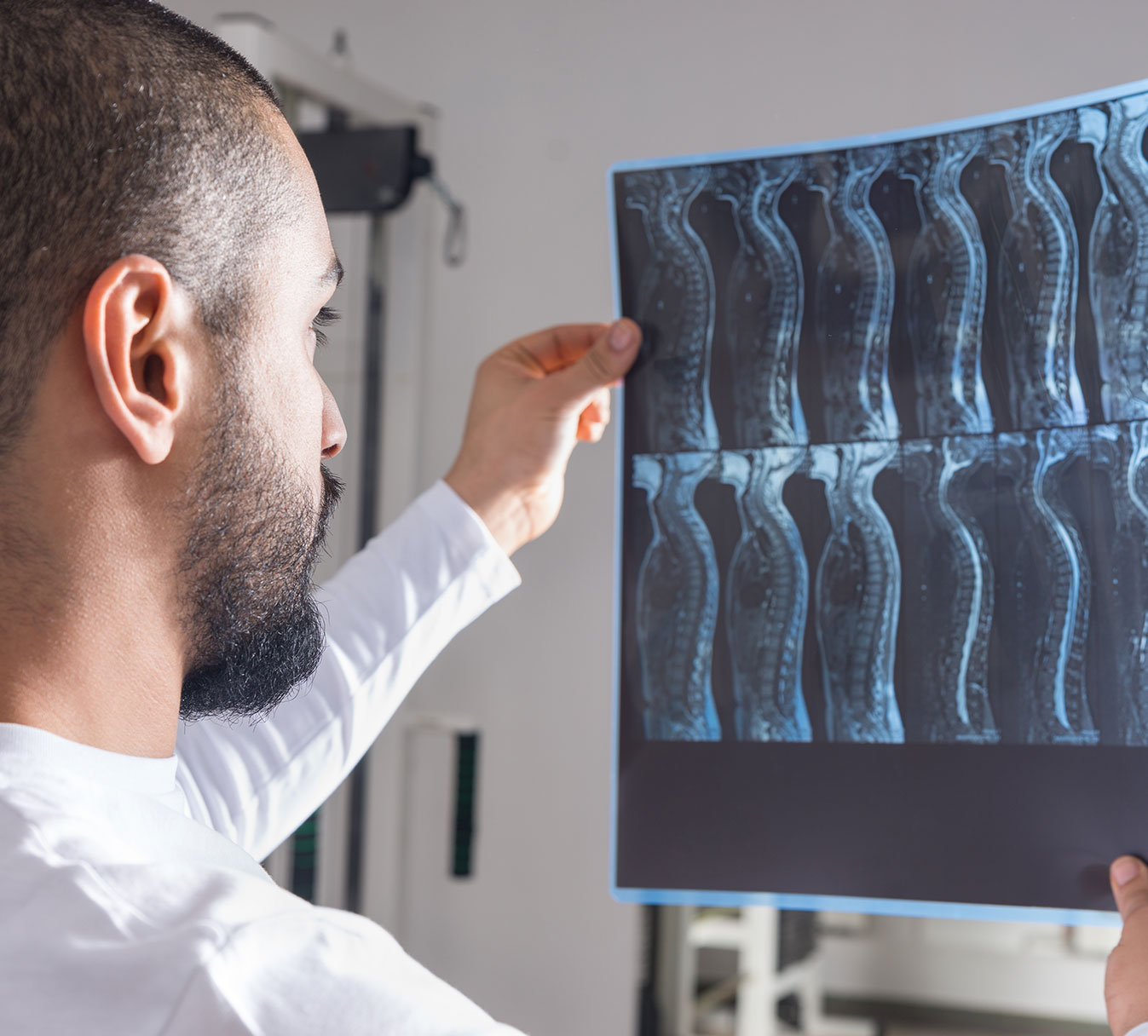What Is Spinal Cord Compression?
Spinal cord compression happens when something presses on the spinal cord. The spinal cord carries messages between the brain and body. When it gets compressed, those signals may be disrupted, leading to pain, weakness, or even paralysis. Compression may occur suddenly after a traumatic event or gradually from conditions like degenerative disc disease. In traumatic spinal cord injury accidents, the force of impact often damages vertebrae, discs, or surrounding tissues, which pinch the spinal cord.
Common Causes of Spinal Cord Compression Injuries in New York
In a city as active and dense as New York, spinal cord compression injuries happen in many ways:
- Motor vehicle accidents: Car, truck, and motorcycle crashes can fracture vertebrae or herniate discs that press into the spinal cord.
- Pedestrian and bicycle collisions: Impact with a vehicle can cause severe trauma to the spine.
- Workplace accidents: Construction accidents, falls from scaffolding, or heavy-lifting injuries often involve spinal damage.
- Slip-and-falls: Unsafe premises conditions, such as wet floors or broken stairs, can lead to falls that compress the spine.
- Falling objects: Construction sites in New York pose risks for falling debris that can cause devastating spinal compression.
- Medical malpractice: Surgical errors or delays in diagnosing spinal stenosis or tumors can worsen compression.
Symptoms and Medical Outlook
The symptoms of spinal cord compression vary by location and severity of pressure. Common symptoms include:
- Strong neck or back pain
- Tingling, numbness, or burning sensations in arms or legs
- Weakness or difficulty walking
- Loss of bladder or bowel control in severe cases
Medical outlook depends on how quickly a patient receives treatment. In many cases, surgery, rehabilitation, and long-term therapy are needed. Some patients face partial recovery; others suffer permanent loss of mobility or independence.
The Impact of Spinal Compression Injuries on Your Life
Long-Term Physical and Emotional Challenges
Spinal cord compression can turn daily life upside down. Victims often deal with chronic pain, loss of mobility, and the inability to return to favorite activities. Even simple routines like climbing stairs, holding children, or commuting on the subway in New York can become daunting. Beyond the physical toll, many people experience depression, anxiety, and fear about their future independence. These emotional challenges can be just as difficult as the physical pain.
Medical Treatment and Rehabilitation Costs
Treatment for spinal compression is expensive. Patients may need:
- Emergency surgery
- Multiple hospital stays
- Physical and occupational therapy
- Long-term medication management
- Mobility aids such as wheelchairs or braces
Even with health insurance, copays, rehabilitation, and supportive care can overwhelm families financially.
Lost Wages and Diminished Earning Capacity
Victims often lose weeks or months of work. In severe cases, they can never return to their prior profession. A construction worker with spinal compression may not safely lift, bend, or climb again. A professional relying on long commutes may struggle when mobility is impaired. Lost earnings create long-term financial strain. Future earning capacity may diminish permanently when victims cannot perform tasks they once could.
Legal Rights for Spinal Compression Victims in New York
Personal Injury Laws and Spinal Cord Compression Claims
New York law allows people injured by another person’s negligence to pursue financial compensation through personal injury claims. To succeed, victims must show that the at-fault party owed them a duty of care, breached it, and caused the spinal injury.
Statute of Limitations for Filing a Claim in New York
In New York, most personal injury lawsuits must be filed within three years of the date of the accident under CPLR § 214. If the injury stems from medical malpractice, victims usually have two years and six months from the negligent act or from the end of continuous treatment with the negligent provider under CPLR § 214-a. If the claim involves a municipality like the City of New York, a Notice of Claim must be filed within 90 days of the incident, and the lawsuit must be filed within one year and 90 days. Failing to meet these deadlines can prevent claims from moving forward.
Proving Negligence in Spinal Compression Injury Cases
To hold someone responsible, victims must prove negligence. This means showing that another party acted carelessly under the circumstances. For example:
- A driver ran a red light and caused a spinal injury.
- A building owner failed to repair broken stairs, leading to a fall.
- A construction contractor ignored safety procedures and created dangerous working conditions.
Evidence such as medical records, eyewitness accounts, surveillance video, and expert testimony often plays a key role in proving negligence.
How a New York Personal Injury Lawyer Can Help
Investigating Your Injury and Establishing Liability
Lawyers take aggressive steps to uncover all possible evidence. They review accident reports, interview witnesses, collect medical documentation, and consult safety experts. Building liability requires a clear, fact-driven approach.
Working with Medical Experts to Strengthen Your Case
Doctors and specialists play an important role by explaining how compression has affected the spinal cord. Their testimony can link accident trauma directly to symptoms and long-term disability.
Negotiating with Insurance Companies
Insurance companies often attempt to minimize or deny claims. A strong advocate pushes back aggressively. Attorneys present evidence of medical costs, lost income, and suffering to demand fair payment.
Preparing for Trial if Necessary
If insurers refuse to negotiate fairly, a lawyer can present the case in court. Preparation involves creating compelling arguments, preparing expert witnesses, and demonstrating the impact of injury on the victim’s life.
Tell Us What Happened
"*" indicates required fields


